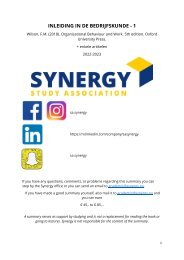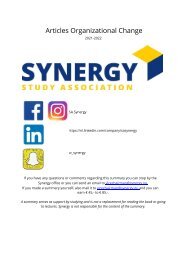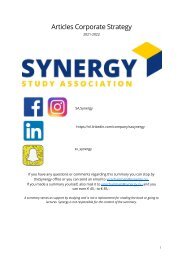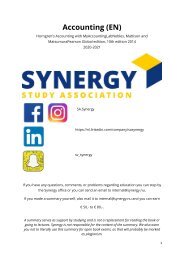Create successful ePaper yourself
Turn your PDF publications into a flip-book with our unique Google optimized e-Paper software.
liabilities.<br />
Many analysts favour an acid-test or quick ratio that relates total current liabilities to cash, shortterm<br />
investments, <strong>and</strong> receivables.<br />
Chapter 14 – Non-current liabilities<br />
Non-current liabilities (sometimes referred to as long-term debt) consist of an expected outflow<br />
of resources arising from present obligations that are not payable within a year or the operating<br />
cycle of the company, whichever is longer. Bonds payable, long-term notes payable, mortgages<br />
payable, pension liabilities, <strong>and</strong> lease liabilities are examples of non-current liabilities.<br />
A bond arises from a contract known as a bond indenture. A bond represents a promise to pay<br />
(1) a sum of money at a designated maturity date, plus (2) periodic interest at a specified rate on<br />
the maturity amount. The main purpose of bonds is to borrow for the long term when the<br />
amount of capital needed is too large for one lender to supply. Types of bonds → bladzijde 655.<br />
The selling price of a bond issue is set by the supply <strong>and</strong> dem<strong>and</strong> of buyers <strong>and</strong> sellers, relative<br />
risk, market conditions, <strong>and</strong> the state of the economy. The investment community values a bond<br />
at the present value of its expected future cash flows, which consist of (1) interest <strong>and</strong> (2)<br />
principal. The interest rate written in the terms of the bond indenture is known as the stated,<br />
coupon, or nominal rate. The stated rate is expressed as a percentage of the face value of the<br />
bonds (also called the par value, principal amount, or maturity value).<br />
The difference between the face value <strong>and</strong> the present value of the bonds determines the actual<br />
price that buyers pay for the bonds. This difference is either a discount or premium.<br />
- If the bonds sell for less than face value, they sell at a discount<br />
- If the bonds sell for more than face value, they sell at a premium<br />
The rate of interest actually earned by the bondholders is called the effective yield or market<br />
rate. When bonds sell at less than face value, it means that investors dem<strong>and</strong> a rate of interest<br />
higher than the stated rate.<br />
The company records adjustment to the cost as bond interest expense over the life of the bonds<br />
through a process called amortization. Amortization of a discount increases bond interest<br />
expense. Amortization of a premium decreases bond interest expense. The required procedure<br />
for amortization of a discount or premium is the effective-interest method. Under the effectiveinterest<br />
method, companies:<br />
1. Compute bond interest expense first by multiplying the carrying value (book value) of the<br />
bonds at the beginning of the period by the effective-interest rate<br />
2. Determine the bond discount or premium amortization next by comparing the bond interest<br />
expense with the interest to be paid.<br />
The difference between current notes payable <strong>and</strong> long-term notes payable is the maturity date.<br />
<strong>Accounting</strong> for notes <strong>and</strong> bonds is quite similar. Like a bond, a note is valued at the present value<br />
of its future interest <strong>and</strong> principal cash flows. The company amortizes any discount or premium<br />
over the life of the note.<br />
A common form of long-term notes payable is a mortgage note payable. A mortgage note<br />
payable is a promissory note secured by a document called a mortgage that pledges title to<br />
property as security for the loan.<br />
<strong>Reporting</strong> of non-current liabilities is one of the most controversial areas in financial reporting.<br />
Four additional reporting issues related to non-current liabilities are addressed in this section:<br />
1. Extinguishment of non-current liabilities → In some cases, a company extinguishes debt before<br />
its maturity date. The amount paid on extinguishment or redemption before maturity, including<br />
32
















